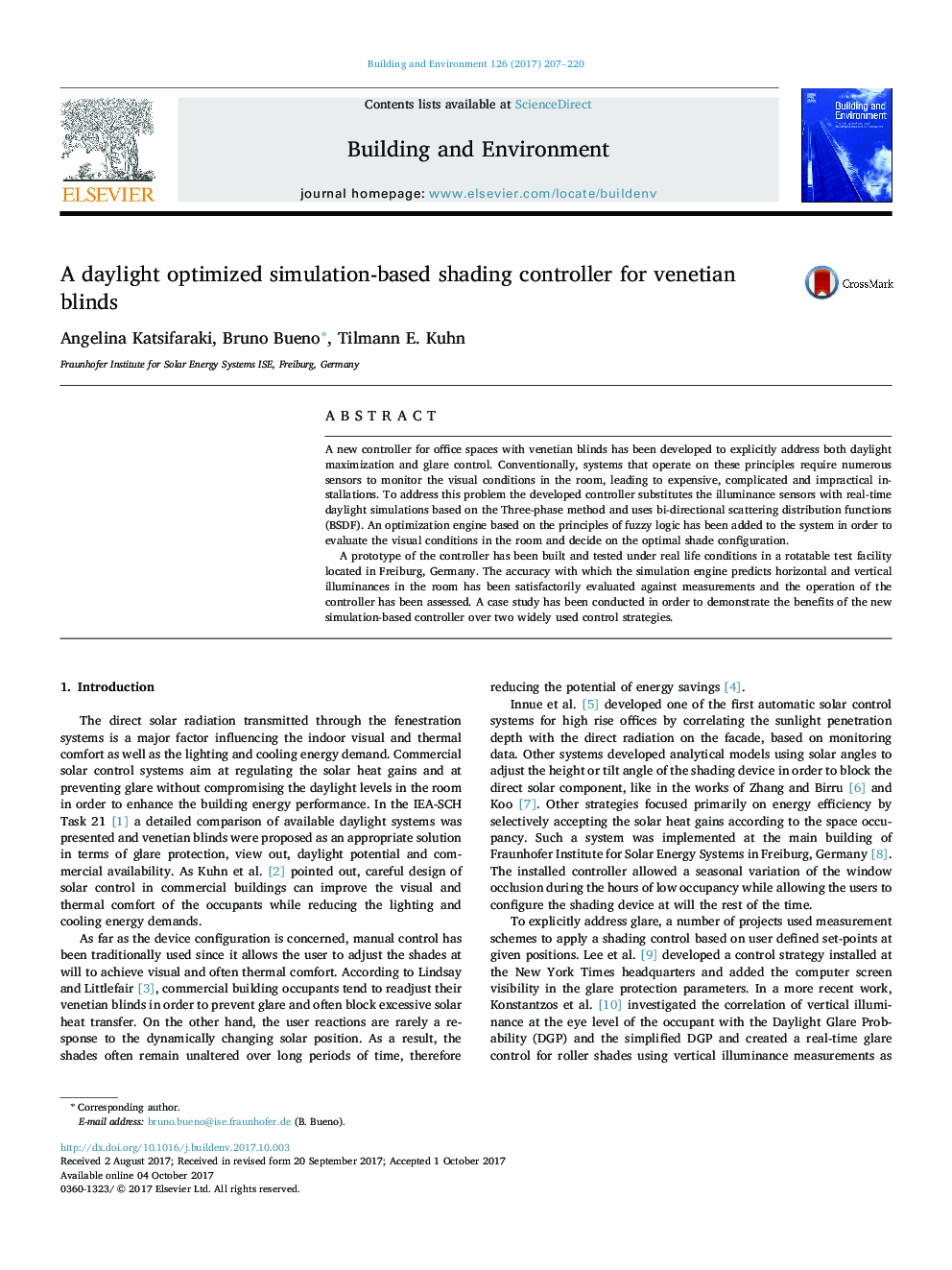| Article ID | Journal | Published Year | Pages | File Type |
|---|---|---|---|---|
| 6479180 | Building and Environment | 2017 | 14 Pages |
â¢Control system for venetian blinds based on real-time daylight simulations.â¢Horizontal and vertical illuminance values used to define daylight provision and glare risk.â¢An easier and flexible method for the commissioning of the shade control system.â¢Considerations of daylight provision, glare risk, energy demand and window coverage.
A new controller for office spaces with venetian blinds has been developed to explicitly address both daylight maximization and glare control. Conventionally, systems that operate on these principles require numerous sensors to monitor the visual conditions in the room, leading to expensive, complicated and impractical installations. To address this problem the developed controller substitutes the illuminance sensors with real-time daylight simulations based on the Three-phase method and uses bi-directional scattering distribution functions (BSDF). An optimization engine based on the principles of fuzzy logic has been added to the system in order to evaluate the visual conditions in the room and decide on the optimal shade configuration.A prototype of the controller has been built and tested under real life conditions in a rotatable test facility located in Freiburg, Germany. The accuracy with which the simulation engine predicts horizontal and vertical illuminances in the room has been satisfactorily evaluated against measurements and the operation of the controller has been assessed. A case study has been conducted in order to demonstrate the benefits of the new simulation-based controller over two widely used control strategies.
